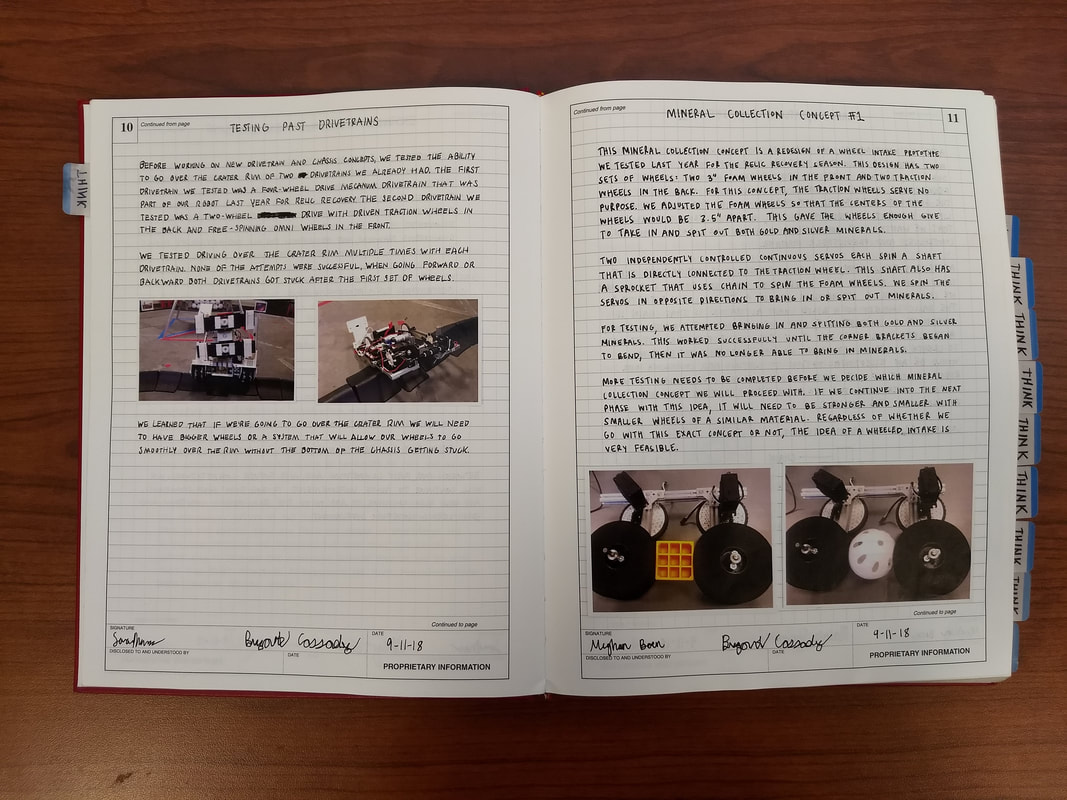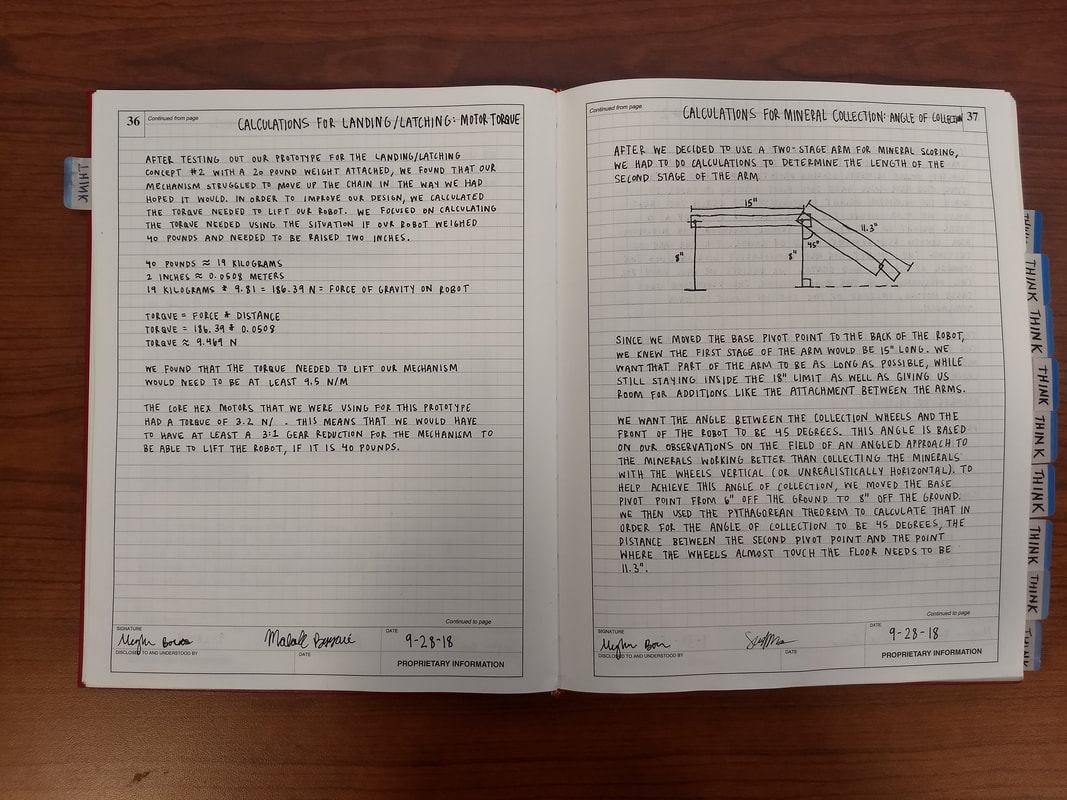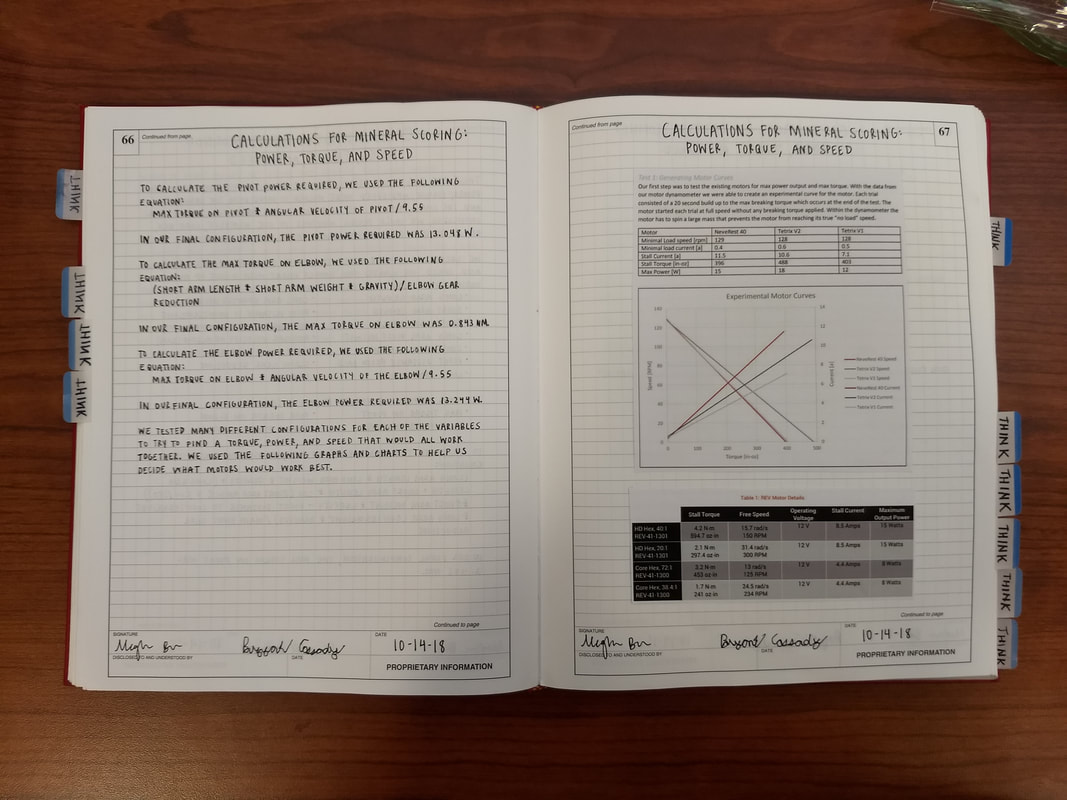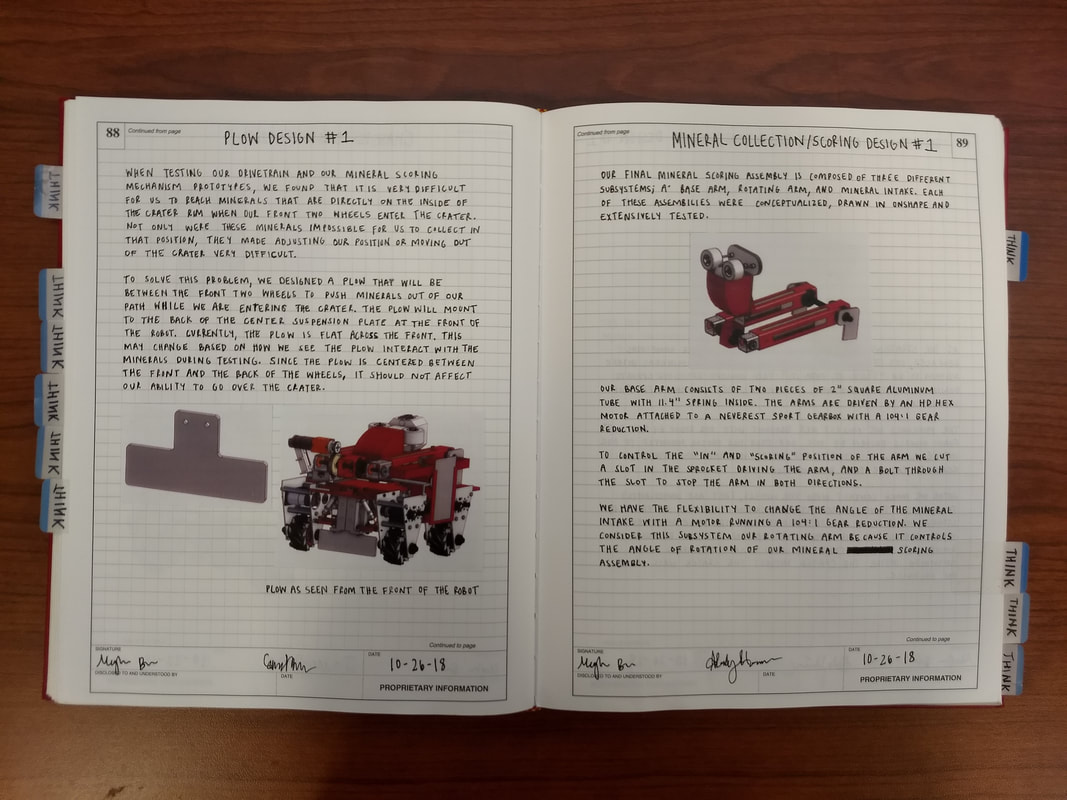At the 2018-2019 FIRST Championship in Houston, we were honored to be chosen as the recipient of the Inspire Award for the ROVER RUCKUS season. Although FTC teams do not receive official feedback from judges, our interaction with judges lead us to believe that three things set us apart from other teams: (1) our strategic planning, (2) our commitment to the engineering design process, and (3) our communication skills. After you review this page, we welcome your questions to [email protected] or to @FTC9879 on Twitter.
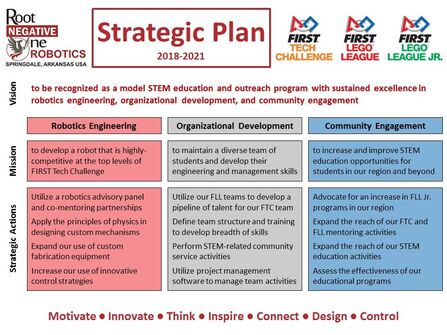
Strategic Planning
Having a team strategic plan is part of the FTC awards criteria, but our strategic plan is more than just a document to “check a box” on a judging sheet. We developed our first, three-year, strategic plan at the beginning of our rookie season (2015-2016). After the 2017-2018 championship in Houston, we developed a new strategic plan with a more ambitious and broader vision, along with strategic actions in three areas: robotics engineering, organizational development, and community engagement.
We rely on our strategic plan to guide our actions and to measure our success. An example of how our strategic plan guides us is the selection of community engagement activities. FTC teams have many opportunities to serve FIRST, serve STEM education, and serve their community. Like many teams, we host camps, attend community events, and host tournaments, so we have to be careful not to take on too much. When considering a new outreach activity, we check to see if it aligns with one or more of the strategic actions in the community engagement section of our strategic plan. If the activity does not align with these actions, then we do not pursue it.
Commitment to the Engineering Design Process
Each season, our team commits to following a true engineering design process of requirements specification (strategy, functionality, speed, etc.), conceptual design, prototyping, physics-based design using 3D CAD, fabrication of custom parts, assembly, and testing. More importantly, we are committed to using our own ideas throughout the process, and not being swayed mid-season by YouTube videos or teams that perform better than us at early competitions. By sticking to our own ideas and the design process, we are able to share a more meaningful story with the judges.
Like many teams at that time, we provided judges with a word-processed notebook (we call it our engineering notebook supplement) that includes information about our team (including our strategic plan and budget/accounting), our community engagement activities, and a summary of our final robot design and control systems. But what set us apart was our traditional, handwritten, engineering notebook that tells the detailed and chronological story of our design process. Every idea, prototype, design, test, match, etc. that we consider/perform goes into this notebook. A managed workflow enables us to keep the handwriting (with corresponding sketches, drawings, and photos) up to date and chronologically consistent with the story of our season.
Having a team strategic plan is part of the FTC awards criteria, but our strategic plan is more than just a document to “check a box” on a judging sheet. We developed our first, three-year, strategic plan at the beginning of our rookie season (2015-2016). After the 2017-2018 championship in Houston, we developed a new strategic plan with a more ambitious and broader vision, along with strategic actions in three areas: robotics engineering, organizational development, and community engagement.
We rely on our strategic plan to guide our actions and to measure our success. An example of how our strategic plan guides us is the selection of community engagement activities. FTC teams have many opportunities to serve FIRST, serve STEM education, and serve their community. Like many teams, we host camps, attend community events, and host tournaments, so we have to be careful not to take on too much. When considering a new outreach activity, we check to see if it aligns with one or more of the strategic actions in the community engagement section of our strategic plan. If the activity does not align with these actions, then we do not pursue it.
Commitment to the Engineering Design Process
Each season, our team commits to following a true engineering design process of requirements specification (strategy, functionality, speed, etc.), conceptual design, prototyping, physics-based design using 3D CAD, fabrication of custom parts, assembly, and testing. More importantly, we are committed to using our own ideas throughout the process, and not being swayed mid-season by YouTube videos or teams that perform better than us at early competitions. By sticking to our own ideas and the design process, we are able to share a more meaningful story with the judges.
Like many teams at that time, we provided judges with a word-processed notebook (we call it our engineering notebook supplement) that includes information about our team (including our strategic plan and budget/accounting), our community engagement activities, and a summary of our final robot design and control systems. But what set us apart was our traditional, handwritten, engineering notebook that tells the detailed and chronological story of our design process. Every idea, prototype, design, test, match, etc. that we consider/perform goes into this notebook. A managed workflow enables us to keep the handwriting (with corresponding sketches, drawings, and photos) up to date and chronologically consistent with the story of our season.
Communication Skills
We take great pride in developing and showcasing our communication skills. Our engineering notebook and our engineering notebook supplement demonstrated our commitment to written communication skills. We strive to provide judges with a clear, accurate, detailed, and chronological story of the build season, along with the details one would need to build and program a replica of our robot.
Because our time in the judging room is limited, we use a scripted presentation that is rehearsed to the point that it feels extemporaneous. We have worked year-round for many years to get to where we are. So we need to choose our words carefully to give the judges the breadth and depth they expect from a top team (see the judged awards criteria from the game manual) and to highlight the things that we think make us unique. We split our presentation evenly between technical and non-technical, and we start with non-technical. Everyone on our team has a speaking part, and we try to assign speakers to parts based on the individual student’s expertise. We use visual aids (PowerPoint slides and our robot) to facilitate our presentation.
We take great pride in developing and showcasing our communication skills. Our engineering notebook and our engineering notebook supplement demonstrated our commitment to written communication skills. We strive to provide judges with a clear, accurate, detailed, and chronological story of the build season, along with the details one would need to build and program a replica of our robot.
Because our time in the judging room is limited, we use a scripted presentation that is rehearsed to the point that it feels extemporaneous. We have worked year-round for many years to get to where we are. So we need to choose our words carefully to give the judges the breadth and depth they expect from a top team (see the judged awards criteria from the game manual) and to highlight the things that we think make us unique. We split our presentation evenly between technical and non-technical, and we start with non-technical. Everyone on our team has a speaking part, and we try to assign speakers to parts based on the individual student’s expertise. We use visual aids (PowerPoint slides and our robot) to facilitate our presentation.
To prepare for Q&A, we bring in experienced judges prior to our tournaments to put us thru practice judging sessions. In Q&A, we let the “experts” answer the specific questions, and we try to give specific,concise answers with no fluff. When we get a generic question (What is the biggest challenge you overcame? What is the most unique thing about your team?), we give at least one technical and at least one non-technical answer. For pit visits, we make sure we always have a small group of experienced team members in our pit who can answer detailed technical and non-technical questions.
